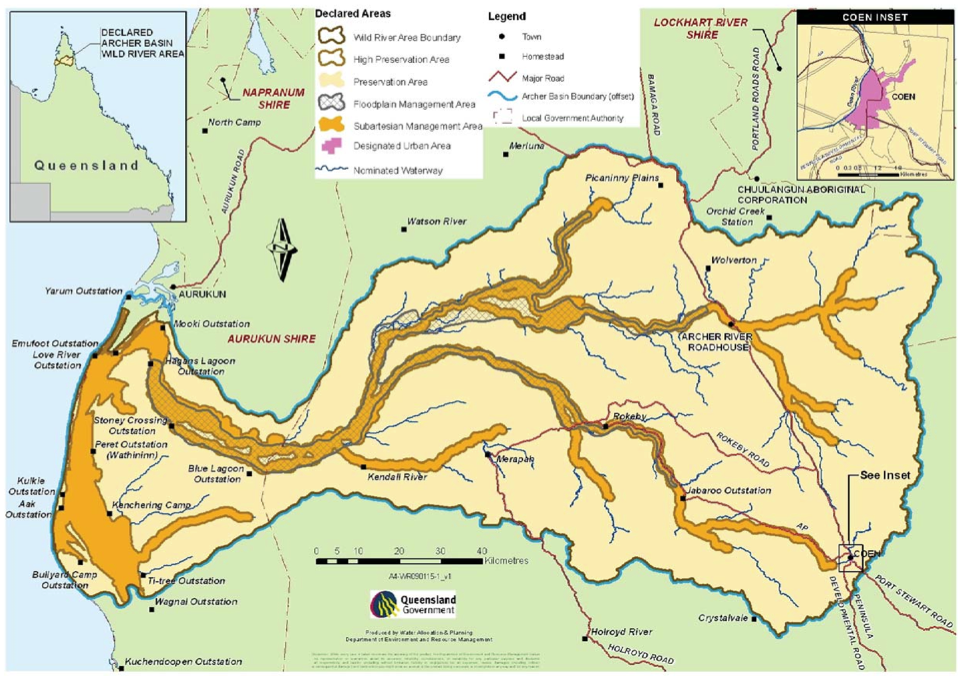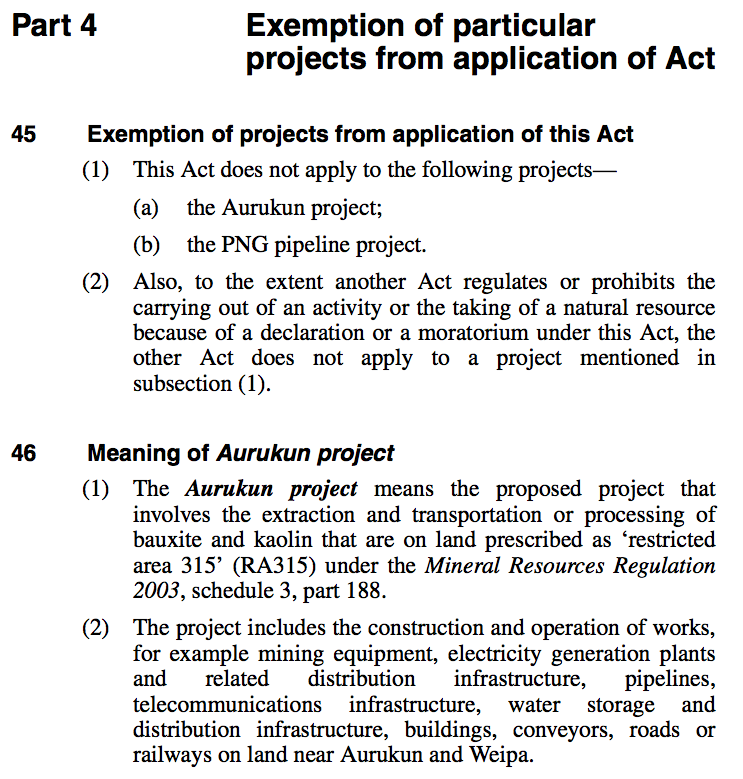Queensland’s alternative Premier, former Brisbane Lord Mayor Campbell Newman, has been on the campaign trail for most of 2011. Last week he announced the Liberal Party’s position on Queensland’s Wild Rivers Legislation. He intends to remove three rivers in Cape York from the legislation, which is no surprise given that Tony Abbot announced a year ago that his party wanted the legislation scrapped, even though his threats to take action never materialised.
The legislation provides certainty as to what types of development will be allowed at close proximities to declared Wild Rivers. It does not preclude all development, and expressly allows the following types of development:
- existing developments
- grazing
- taking water for stock or domestic needs
- improving pasture
- land management such as clearing weeds, and ripping for land remediation
- blade ploughing
- recreational fishing
- tourism
- boating or refueling
- traditional cultural activities
- native title
- traditional burning
- growing community gardens for domestic purposes and market gardens up to four hectares in size
- some mining (e.g. limited hand sampling in-stream and low-impact exploration off-stream)
- outstation development.
In fact, the main controls in the legislation, and resulting codes and guidelines, simply prohibit development that will substantially affect water run-off into rivers, such as open-cut mines, extensive land clearing, and damming of rivers. The map below shows the Wild Rivers declaration area for the Archer River, with management boundaries reflecting the principle that the closer to the river, the tighter the development controls.
The Liberal Party proposes to replace the Wild Rivers Declaration with a ‘Bio-region Management Plan’, which will apparently have more input from Cape York communities. I have no idea what this means, but from my personal experience on the matter, the Wild Rivers legislation is exactly what you think of when you think bio-region management plan with input from local communities.
The ridiculous situation where the Liberal Party is promising to scrap the current declarations, and have the same bureaucrats consult with the same community interests to develop a rebadged Liberal Party version of the same document is symptomatic of the type of nonsense politics on show in Australia’s capitals.
Local indigenous leader and Murrandoo Yanner, from the Carpentaria Land Council, had this to say last year about the existing Wild Rivers legislation following Tony Abbot’s musings on the topic:
The merits of the existing legislation is firstly and primarily I think it protects natural resources that are accessed and used by our people all the time and have been since time immemorial.
It protects those and therefore it protects the lifestyle for us.
Secondly, it stops the practice that raged for decades under Joh Bjelke-Petersen and every government since, until this legislation was introduced, of uninhibited and damaging development left, right and centre – no science to it, no regulation, people putting little weirs and dams in it without any approval or knowledge of science, that blocks the pathways of fish and prawns and other animals from travelling and breeding.
And it’s destroying parts of our region.
So it’s good legislation in that sense.
And also a third component is it allows for long-term sustainable economic development, not a one-hit overnight wonder.
And there’s also a spin-off benefit such as some of the best people able to utilise and manage natural resource management in these regions are our Aboriginal people through the Aboriginal ranger program that it supports.
To return to Pearson’s earlier point, there is a habit of governments drawing exclusion zones around valuable mineral deposits when it comes to environmental preservation. The open pit Ranger uranium mine, for example, is fully surrounded by Kakadu National Park. Bauxite deposits at Aurukun, just south of Weipa, are strategically excluded from the Archer River declaration (see below extract), partly so the government would not look foolish for trying to encourage the resource development for many years:
After so many years developing the current planning framework in the Cape, including the local debates, discussions and trade-offs that have occurred, I can’t help but question Newman’s motivation. Politically, he is contesting one of the greenest seats in the state, Ashgrove, and there is widespread support for Wild Rivers across the state. It definitely is wild politics.
Tips, suggestions, comments and requests to [email protected] + follow me on Twitter @rumplestatskin

